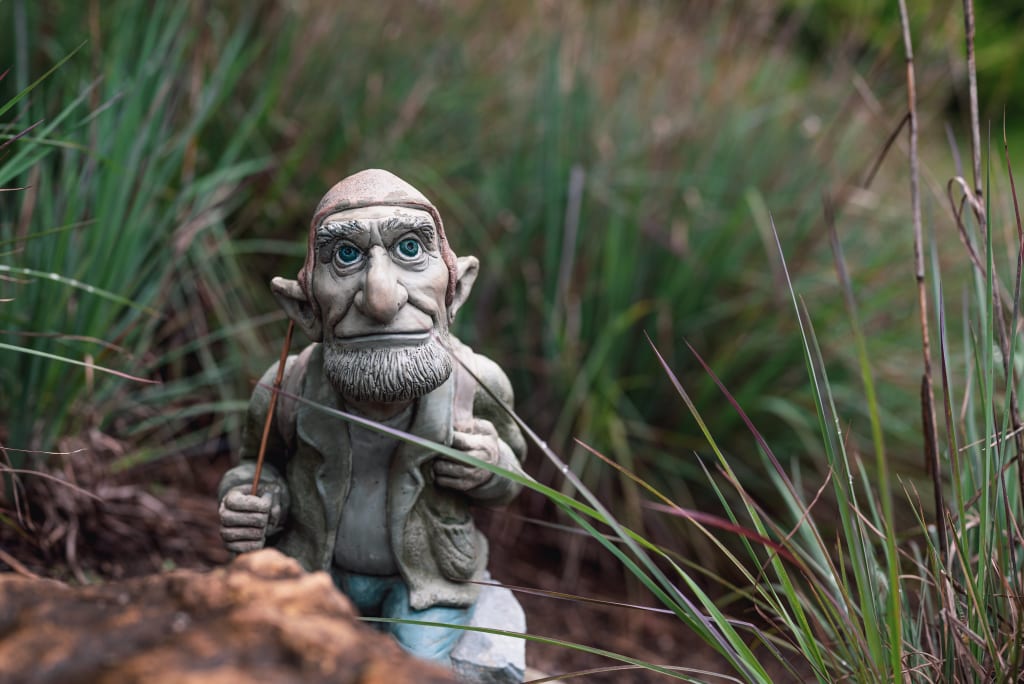Rising Giants
Short-Statured Stars Redefining Cinematic Success and Societal Impact

They captivate hearts with the grace of their motions, and entice with their lovely pranks, the purity of their smiles and laughter, and the exciting journeys they go on. Their wit and the juxtaposition in their experiences with their little size give them a great topic for literary works, as well as a particular place in play and globally.
Dwarfs have been a rich subject for numerous ancient and modern tales, romances, and novels. Their universe is magnificent, intriguing, instructive, enchanting, and splendid, capturing both young and old. The narrative of the English-Irish author Jonathan Swift (1667-1745), "Gulliver's Travels" (1726), has attained unequaled popularity and recognition since its birth in literature. The narrative is divided into four volumes that describe four imaginary voyages to Lilliput, Brobdingnag, Laputa, and Balnibarbi and Glubbdubdrib and Japan, and the Houyhnhnms' realm. Valuable lessons and values are taken from many intriguing adventures.
Since the silent film period, Hollywood has embraced the narrative, adapting it into short and feature films, television shows, and even radio productions.
The first cinematic treatment was a 1903 French short silent film named "Le Voyage de Gulliver Lilliput et chez les géants," created by the legendary French filmmaker Georges Méliès, renowned as the "Father of Cinematic Illusions." Later, in 1934, Disney released "Gulliver Mickey," a film based on the novel that featured the renowned character Mickey Mouse. A year later, a Russian film named "The New Gulliver" was released. In 1939, Disney released another animated picture, "Gulliver's Travels," which followed the plot more accurately.
The film "The Three Worlds of Gulliver" directed by Jack Sher was released in 1960. It included various breathtaking visual effects produced by Ray Harryhausen, a master of visual trickery. A popular TV series titled "Gulliver's Travels" gained popularity in the 1990s and was also broadcast in Egypt at the time. In 2010, a fresh version of the novel was released in the shape of the film "Gulliver's Travels." Using three-dimensional stop-motion animation, the concept of "the giant in the land of the dwarfs" was portrayed comedically. The film stars comedian Jack Black as Lemuel Gulliver, a New York newspaper journalist who goes on a perilous expedition to the Bermuda Triangle only to discover that he is a giant in comparison to the people of the area, who are the size of his fingertip. As the tale proceeds, incidents and comic escapades ensue.
"Snow White" (Snow White and the Seven Dwarfs) is a fairy tale.
Her celebrity was despotic. In the classic "Snow White and the Seven Dwarfs," Snow White discovered the seven dwarfs' house and told them her story. She agreed to remain with them in exchange for cleaning the cottage and cooking for them. The queen tried to murder Snow White countless times, but the dwarfs always saved her. Snow White once went into a coma after eating a poisoned apple handed to her by the evil queen. The dwarfs assumed she was dead and placed her in a glass coffin, taking turns protecting her. Later, a king's son discovered the glass casket and was charmed by the lovely maiden within.
He begged the dwarfs for the casket and promised them everything they desired. The dwarfs first refused, but the prince persevered until they relented and gave him the casket. The soldiers tripped on the roots of a tree while transporting the coffin, causing the casket to shake and remove the poisoned apple from Snow White's lips. She opened her eyes, resurrected, and a spectacular wedding was organized, inviting everyone. Snow White and the other characters lived happily ever after.
"Walt Disney" produced "Snow White and the Seven Dwarfs" (1937), directed by "David Hand." It was the world's first feature-length animated film, a significant creative milestone with cutting-edge technology breakthroughs. The budget was $1.48 million, a record at the time, yet it was a huge success with significant profits. The fable "Snow White," first published in 1812 by the Brothers Grimm, was adapted for the film.
"The Hobbit" and Other Short-Story Literature and Drama
"The Hobbit," sometimes known as "There and Back Again," is a fantasy story created by J.R.R. Tolkien. It is regarded as the "most important novel of the twentieth century (for adult readers)" in the world of children's books and periodicals. It has sold over 100 million copies worldwide since its release on September 21, 1937. The plot focuses around a treasure sought by the dwarves from the dragon Smaug. These dwarfs' forefathers resided on a mountain filled with gold, silver, and gems. However, nearly a century before the events of the novel, the dragon Smaug, who came from the far north with a company of other dragons, destroyed the village and grabbed the dwarves' wealth.
The thirteen dwarves want to get rid of him and retrieve their forefathers' wealth. Peter Jackson, a New Zealand director, made a trilogy of films based on the novel.
The Chilean author Isabel Allende transports us to Africa's wonderful and exotic forests in her story for children and adults, "The Forest of Dwarves" (2005). We see Alexandra and Nadia's battle against one of the selfish ones who manipulates everything for his own goals, even the kind-hearted dwarfs of the forest.
Maroun Abboud (1886-1962), a Lebanese writer, presents twenty-four stories in "Giant Dwarves" (2013) on the subtleties of the Lebanese hamlet and its fascinating world juxtaposed to the metropolis and its volatility. He discusses not just the outward worlds of the village, but also the inside worlds of individuals. He told his narrative in an exciting and illuminating manner.
Short Stature in Literature and Drama in Global Cinema
In the worlds of fantasy and science fiction, Hollywood focuses on diminutive stature, generating dramatic works in which these folks portray active characters with vital societal responsibilities. They occupied a cinematic area, presenting a variety of dramatic performances. Warwick Davis is regarded as one of the most well-known dwarves to have appeared in films during the last three decades. He appeared in the film "The Lord of the Rings" (which spawned decades of science fiction filmmaking). He also appeared in the "Star Wars" and "Harry Potter" films, among others.
Verne Troyer is one of the smallest actors to have appeared in global cinema. One of his most well-known parts was in the "Austin Powers" series, as well as the first installment in the legendary "Harry Potter" series. Peter Dinklage rose to prominence with a key part in the comedy picture "Elf," starring comic actor Will Ferrell. He also appeared in the film "The Chronicles of Narnia."
Kenny Baker was an artist who appears in the "Star Wars" film series as the machine "R2-D2" and also in the film "Time Bandits." Hervey Villechaize had a popular and well-known role in the James Bond film "The Man With The Golden Gun" and later appeared in numerous more films before suffering from health difficulties.
Mickey Rooney, who starred in "The Wizard of Oz" (1939), one of the most recognized masterpieces of world film, is one of the notable short-statured persons who performed major parts in worldwide cinema. He died in 2010 at the age of 90. Michelle Dent rose to prominence as the brilliant and evil guy with several connections with women in the television series "Wild Wild West," where he seduced the famous actress Sophia Loren.
David Rappaport began his career as a children's show host before moving on to acting, appearing in the film "Time Bandits" and starring in the TV series "The Wizard." He distinguished himself as a dramatic actor and was one of the few dwarves granted main roles. Only Jack Purvis has portrayed three separate parts in the "Star Wars" film series. He also appeared in "Time Bandits," "Brazil," and "The Adventures of Baron Munchausen." Michelle Anderson appears in "Twin Peaks" episodes as an extraterrestrial entity with a particular look, dress, and mannerisms, as well as a distinct dancing technique.
Throughout history, short-statured people have not been embarrassed of their height. Khejendra Thapa Magar, who is barely 22 inches (56 cm) tall, traveled to the Guinness World Records headquarters on February 22, 2010, to be recognized as the world's tiniest man. He sought to dethrone the Chinese Bao Xishun, who was the world's smallest person at 29 inches (73 cm). Seneb, a dwarf, served as a minister during the fifth dynasty of Pharaonic history. A picture depicts him reclining on a high chair, greeting palace maids and officials who give allegiance and loyalty after marrying one of the royal servants.
About the Creator
Ameen younis
Versatile writer weaving magic and mystery, exploring life's nuances. Through evocative language, I aim to leave a contemplative mark by crafting resonant literary experiences.






Comments
There are no comments for this story
Be the first to respond and start the conversation.